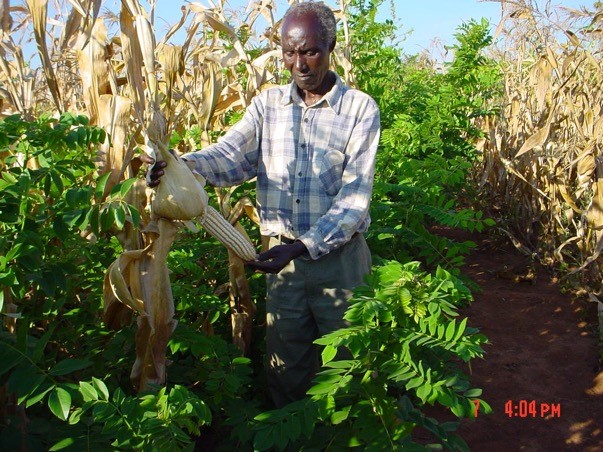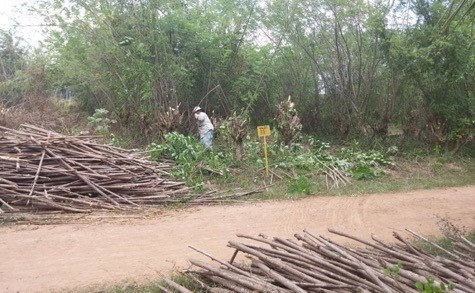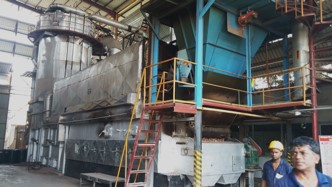How to suck carbon out of the air and convert it into profits and jobs for poor farmers across the globe
By Dennis Garrity
Agriculture is the sector most vulnerable to global warming. And the evidence of negative impacts on agriculture is building up. Climate change has reduced the growth in crop yields by 1–2 percent per decade over the past century (Wiebe et al, 2015). Weather abnormalities related to climate change are costing billions of dollars a year in agriculture, and they are growing exponentially. The FAO predicts a decline of food grain production in the northern hemisphere and serious disruptions in food production in the tropics. This includes predicted declines in the yields of rice, wheat, and corn in China by 36.25%, 18.26%, and 45.10%, respectively, by the end of this century (Zhang et al, 2016).
Verdict: We must immediately apply practical ways to take carbon out of the atmosphere, and store it on or in the earth
Carbon removal, combined with reducing emissions, is critical to limit warming and ensure a safer future. The IPCC report indicates that all pathways that limit global warming to 1.5-2.0 °C with limited or no overshoot will require the use of carbon dioxide removal (CDR) on the order of 100–1000 GtCO2 over the 21st century. CDR would be used to compensate for residual emissions and, in most cases, achieve net negative emissions to return global warming to 1.5°-2.0 C following a peak.
The obvious starting point is to use nature. Trees have been storing carbon in their trunks and roots for millions of years. By restoring degraded forests and degraded agricultural lands, and by using smarter farming practices, we can capture much more carbon on the land. There is overwhelming evidence that these natural solutions can pay for themselves quickly, improving food security, creating jobs, reducing poverty and extracting billions of tons of carbon.
Are there alternative ways by which we can vastly increase carbon capture through bioenergy with carbon capture and storage, that would not require the conversion of agricultural land? Are there ways deploying carbon capture and storage on farmlands that would actually increase crop production?
The overlooked win-win solution
Actually, there are quite practical ways of doing this, and these can be ramped up enormously right now. The methods have been developed, and they have been fully commercialized at scale, but they were not mentioned in the IPCC report. In fact, sadly, these methods have not been emphasized at all in the debate about practical ways forward.
Millions of farmers are establishing leguminous shrubs and trees in their crop fields in many countries throughout the tropics (www.evergreening.org). They harvest the foliage to fertilize their crops, provide fodder for their livestock, and they harvest the fuelwood for household energy or for sale. These shrubs and trees improve vegetative soil cover year-round, and they increase soil moisture, soil fertility and crop yields. They also buffer crop production from the droughts and higher temperatures that are now occurring due to climate change. And they store vast additional quantities of carbon in the soil, while enhancing biodiversity.
These systems of evergreen agriculture are currently being massively scaled-up in many countries in Africa. A major recent conference focused on the gains that have been made in the spread of these technologies on millions of hectares in the Sahel region of West Africa alone (beatingfamine.com; evergreening.org).

Leguminous shrubs are planted in maize fields by small-scale farmers in Zambia and Malawi. They are cut down to the ground before the crops are sown, providing rich biofertilizer to the crops and high-protein livestock fodder. The shrubs gradually begin to regrow by the time the maize is harvested (as seen here). They continue to grow up during the dry season and produce their woody biomass while there is no crop growing in the field.

Small-scale farmer in Sri Lanka harvesting the Gliricidia fuelwood on his cropland during the dry season. The wood will be purchased by the local electrical power plant, providing him a source of cash income in addition to his crop production.

The power plants that use Gliricidia wood fuel in Sri Lanka range from small, village-sized units such as the 35 kilowatt plant pictured above, to industrial-scale power plants of 5-15 MW.
Please read complete paper below.
How to suck carbon out of the air and convert it into profits and jobs for farmers
